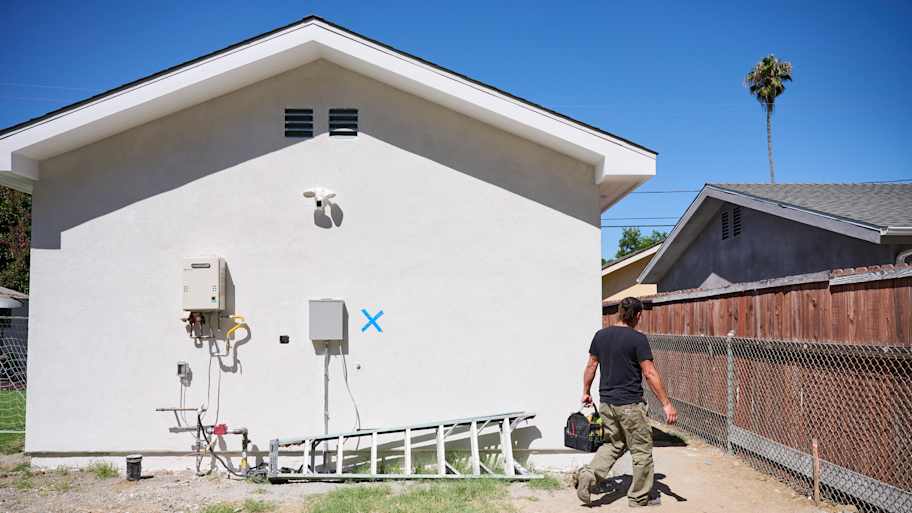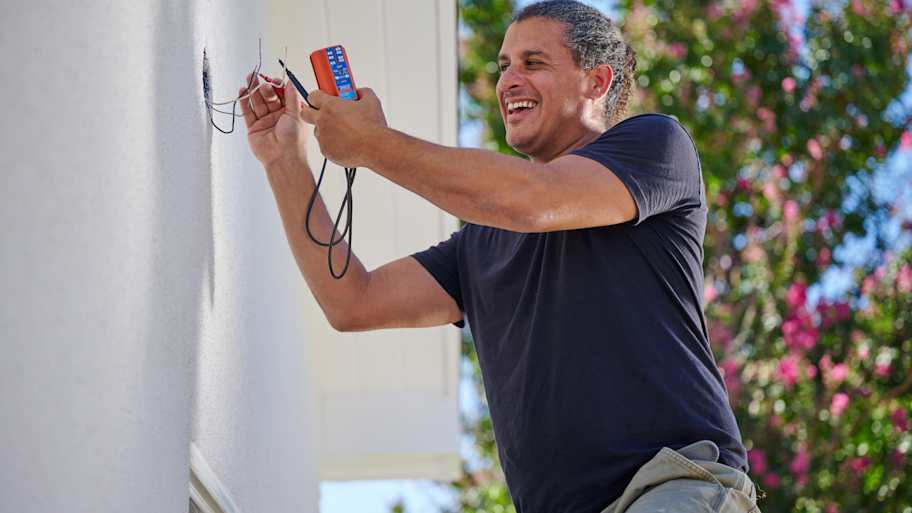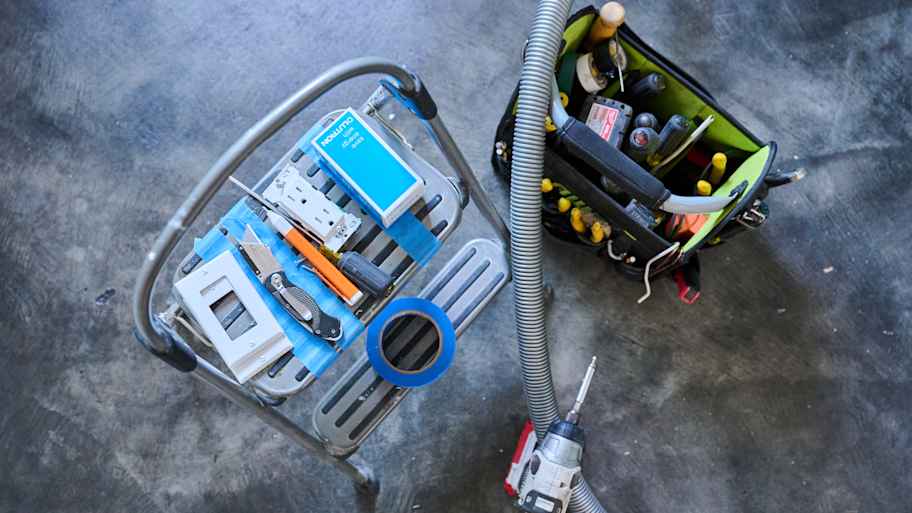How to Fix a Short Circuit in Your Home
Don’t wait long to fix your short circuit


If your devices have suddenly shut down and your circuit breaker keeps tripping, you’re likely dealing with a short circuit. You can learn how to fix a short circuit, but it’s best to hire a professional electrician near you for any type of electrical fix to prevent injury or damage.
You should take this electrical problem seriously, as short circuits can cause injury or even death. While it’s always best to hire an electrician, there may be steps you can take to find and fix a short circuit. Here’s how to fix a short circuit.
Homeowners should steer clear of DIY electrical repairs or installations, as the risk of injury is shockingly high! Instead, hire a local electrician who has the expertise to complete electrical jobs safely.
What Is a Short Circuit?
A short circuit occurs when an electric current flows through a shorter, unintended path with little or no electrical resistance instead of following its intended path. Because electricity seeks the shortest, easiest path of resistance, the electrical current will take that shortcut if faulty wires create a short circuit pathway.
In theory, this may not seem like a problem, but short circuits left unresolved are very dangerous. It can cause an electrical shock and other types of electrical emergencies. If you suspect you have a short circuit somewhere in your home, you should fix it immediately.
How to Fix a Short Circuit

Follow these steps to find a short circuit and fix it. Remember that it’s best to hire a local electrician to repair this type of issue.
1. Identify the Tripped Breaker and Isolate the Circuit
Carefully inspect the breaker panel to determine if the circuit breaker has tripped. If a breaker is switched off, this sign is a good indication that the circuit is tripped. You’ll want to make sure that you’re only working with the circuit in question.
2. Turn the Circuit Breaker Off
In order to identify and fix the short circuit safely, ensure the circuit breaker is turned off. Complete this step by flipping the switch to the “off” position.
3. Identify and Inspect Devices on the Circuit
Once you isolate the circuit, identify which devices are on the circuit. These devices can include appliances, outlets, lights, and more. Inspect each device and look for any signs of damage. Unplug each device and turn on the circuit breaker. By the process of elimination, you should be able to find which appliance is tripping the breaker.
4. Check Wires and Cables
You’ll also want to check the wires inside and between devices. You can inspect electrical and junction boxes, light fixtures, and inside the walls and attic to detect any damaged wires.
5. Buy a New Wire
Once you’ve found the short circuit, you must buy a new wire to replace the faulty one. Make sure the new wire is the same length and type of electrical wire as the one you’re replacing.
6. Remove Insulation and Solder
Next, you’ll need to remove a small amount of insulation from the ends of the wire, exposing the wire enough where it can attach to the current wire’s contact points. Then, use a soldering gun to put solder onto the contact points. Solder the wires together to attach them. Remember that this part of the process is dangerous and should be left to a professional.
7. Turn the Circuit Breaker Back On
Lastly, put the wires back into the system to test whether the short circuit is fixed. You can do so by turning the circuit breaker back on and seeing if the circuit breaker trips. If the circuit breaker doesn’t trip, you’ve successfully fixed the short circuit.
How to Prevent a Short Circuit

Short circuits can create significant problems and put your household in danger. Consider taking these preventative measures to reduce the likelihood of a short circuit.
Get regular electrical maintenance: Faulty and old wires cause short circuits. By keeping up with annual maintenance, you can catch such problems early.
Use less electricity during storms: Since lightning can cause short circuits, you’ll want to limit the number of appliances you use during storms.
Install protective equipment: By having protective equipment such as a circuit breaker, and GFCI and AFCI devices, you can bolster the safety of your electrical system.
Get a routine professional inspection. It’s highly recommended that homeowners get an electrical inspection every three to five years, or every two to three years if your home is over 25 years old. An electrical inspection can ensure that your electrical setups are safe and code-compliant.
Regularly inspect your electrical system. Occasionally check your electrical outlets and appliances for any signs of trouble. For example, if your outlets are producing sparks or a burning smell, it’s time to bring in professional help.
DIY vs. Hiring a Pro
Completing any type of electrical work requires a specific skill set, knowledge, and training—and fixing a short circuit is no exception. If you don’t have extensive knowledge or experience with short circuits, it’s always best to hire a licensed electrician for this task.
The cost to hire an electrician will vary based on the extent of your electrical issues, but most pros charge $50 to $100 per hour. While hiring a qualified electrician requires spending more to repair a short circuit, the peace of mind you’ll get from knowing the job was done safely and correctly is priceless.
Frequently Asked Questions
Short circuits can cause significant damage to electrical appliances, bodily harm, and potentially death to humans. For this reason, they are a serious occurrence. If you’re unable to find and fix a short circuit on your own, you must reach out to a licensed electrician for help.
Short circuits can cause fires, electrical burns, and electrocution, which can lead to serious injury or even death. That’s why it’s important to take preventative measures to prevent short circuits, like getting annual electrical maintenance and an electrical inspection every two to five years, depending on the age of your home.





- Home Generator Repair
- Lamp Repair
- Electric Repair
- Generator Installation
- TV Antenna Services
- Emergency Electricians
- Commercial Electricians
- Attic Fan Installation
- Attic Fan Repair
- Exhaust Fan Installation
- Electric Inspectors
- Subcontractors
- Electrical Construction
- EV Charger Installer
- Chandelier Installation
- Doorbell Installation
- Bathroom Fan Installation
- Ring Installers
- Electrical Panel Upgrade
- 5 Reasons Why Your Appliance Keeps Tripping Your Circuit Breaker
- How to Tell if a Circuit Breaker Is Bad (and What to Do About It)
- How to Replace a Circuit Breaker: A Complete Guide
- Is It Dangerous If a Circuit Breaker Keeps Tripping?
- How Does a Circuit Breaker Work?
- Does Your AC Circuit Breaker Keep Tripping? Here’s Who to Call
- Why My Breaker Switch Won’t Stay On and How to Fix It
- How Many Outlets on a 20-Amp Circuit: Electrical Load, NEC Requirements, and More
- Should You Repair or Replace Your Circuit Breaker Panel: Here’s How To Decide
- How to Tell If a Breaker Is Tripped: Everything You Need to Know











